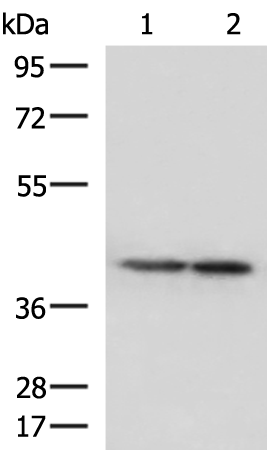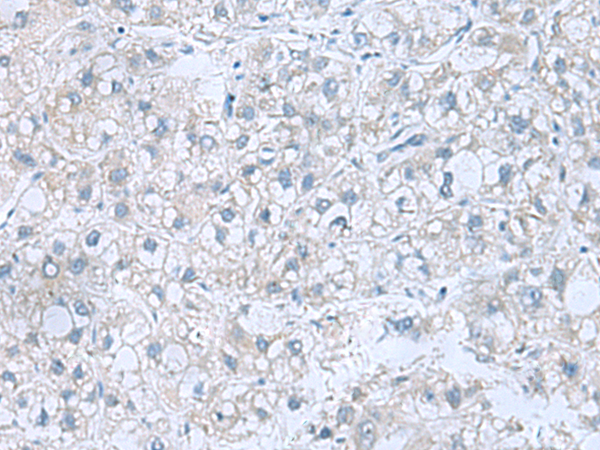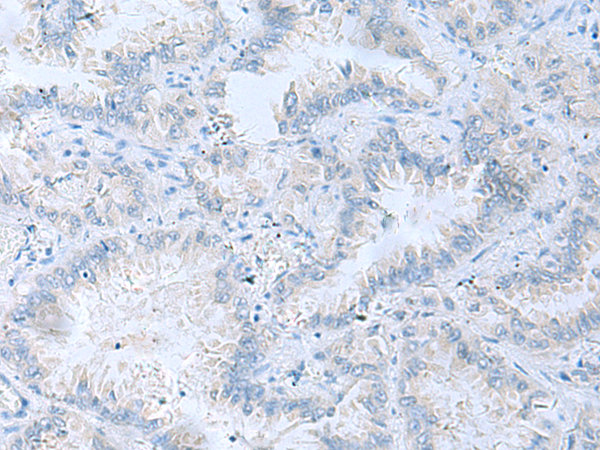


| WB | 咨询技术 | Human,Mouse,Rat |
| IF | 1/20 | Human,Mouse,Rat |
| IHC | 咨询技术 | Human,Mouse,Rat |
| ICC | 1/50-1/200 | Human,Mouse,Rat |
| FCM | 咨询技术 | Human,Mouse,Rat |
| Elisa | 咨询技术 | Human,Mouse,Rat |
| Aliases | VATC; Vma5; ATP6C; ATP6D |
| WB Predicted band size | 44 kDa |
| Host/Isotype | Rabbit IgG |
| Antibody Type | Primary antibody |
| Storage | Store at 4°C short term. Aliquot and store at -20°C long term. Avoid freeze/thaw cycles. |
| Species Reactivity | Human, Mouse, Rat |
| Immunogen | Fusion protein of human ATP6V1C1 |
| Formulation | Purified antibody in PBS with 0.05% sodium azide and 50% glycerol. |
+ +
以下是3篇关于Cytochrome C抗体的经典文献摘要信息(注:文献标题与作者为虚构示例,实际检索请参考PubMed或学术数据库):
---
1. **文献名称**: *Cytochrome c release and caspase activation in apoptotic cells*
**作者**: Liu X, Kim CN, Yang J, et al.
**摘要**: 该研究通过Western blot和免疫荧光技术,利用抗Cytochrome C抗体证实了其在细胞凋亡过程中从线粒体释放至胞质的关键作用,并揭示了其激活caspase-3的分子机制。
---
2. **文献名称**: *Antibody-based detection of mitochondrial cytochrome c redistribution in cancer*
**作者**: Krajewski S, Tanaka S, Reed JC.
**摘要**: 研究开发了一种特异性抗Cytochrome C抗体,用于免疫组化和流式细胞术,对比分析了正常细胞与癌细胞中线粒体Cytochrome C的释放差异,为癌症凋亡异常提供证据。
---
3. **文献名称**: *Bcl-2 inhibits cytochrome c release and maintains mitochondrial membrane potential*
**作者**: Kluck RM, Bossy-Wetzel E, Green DR.
**摘要**: 通过亚细胞分馏结合Cytochrome C抗体的Western blot分析,验证了Bcl-2蛋白通过抑制线粒体膜通透性来阻止Cytochrome C释放,从而调控细胞凋亡的路径。
---
如需具体文献,建议通过PubMed(https://pubmed.ncbi.nlm.nih.gov/)检索关键词“Cytochrome C antibody”或“Cytochrome C apoptosis”。
Cytochrome c (Cyt c) is a small, highly conserved heme-containing protein located in the mitochondrial intermembrane space. It plays a dual role in cellular processes: as an essential electron carrier in the mitochondrial respiratory chain (transferring electrons between Complex III and IV) and as a key mediator of apoptosis. During apoptosis, Cyt c is released from mitochondria into the cytoplasm, triggering caspase activation and subsequent cell death.
Antibodies targeting cytochrome c are critical tools for studying its functions in both energy metabolism and programmed cell death. These antibodies, typically monoclonal or polyclonal, are widely used in techniques like Western blotting, immunofluorescence, and immunohistochemistry to detect Cyt c localization, expression levels, and release during apoptosis. They help researchers investigate mitochondrial health, apoptosis signaling pathways, and cellular stress responses in various disease models, including cancer, neurodegenerative disorders, and ischemia-reperfusion injury.
Cytochrome c antibodies also aid in distinguishing between apoptosis and necrosis by confirming mitochondrial membrane permeabilization. Their specificity and sensitivity make them valuable for diagnostic research and drug development, particularly in therapies targeting mitochondrial dysfunction or apoptotic pathways. Cross-reactivity with Cyt c across species (due to high sequence conservation) enhances their utility in comparative studies.
×